Writing Teaching Resources
Teaching writing strategies and the writing process this school year? Explore a comprehensive collection of teacher resources for primary English teachers — all created by teachers!
Stocked with graphic organisers, writing prompts, templates, worksheets and so much more, this collection of printable and digital activities is designed to help you as you help your students become more effective communicators and unleash their creativity and imagination.
Save time on lesson planning with resources that are aligned with the Australian curriculum (including version 9!) and have been through a careful review process by an expert member of our teacher team to ensure they're ready for your classroom and your students!
Are you looking for tips and tricks to add to your teacher toolkit this school year? Read on for a primer from our teacher team, including engaging activities for teaching writing inprimary school and a look at some of the different writing strategies your students will need to learn.
11 Writing Strategies Kids Should Know by the End of Primary School
We can't talk about teaching kids to write without talking about the different writing strategies that can help them do just that!
When it comes to teaching our students to become confident writers who articulate their ideas effectively, here are some of the strategies our teacher team prioritises:
1. Brainstorming
Brainstorming is something we often do in the classroom, and it's a crucial part of learning to generate the ideas that will drive students' writing as they progress through their educational journey. Kids should know how to create a list of potential topics or points related to a particular writing assignment.
With younger students, this is often done as a whole group by writing ideas and points on chart paper. In upper years, students transition over to using text-based materials to generate ideas and talking points.
2. Outlining
Before diving directly into any assignment, our students should be able to create a structured framework or outline. Teaching students how to create this outline will help them organise their thoughts and arguments for penning their essays, reports and research papers.

3. Using Graphic Organisers
Technically graphic organisers are classroom tools, so you may not think of their use as a writing strategy per se. However, learning to use these tools is another means of providing kids with the tools they need to organize their ideas and information before they sit down to write.
These organisers are particularly useful for expository writing — students can use them to outline main ideas, supporting details, and transitions.
Students can also take advantage of story maps when they are working on narrative writing to plot the key elements of a story, such as characters, setting, conflict, rising action, climax and resolution.
Graphic organisers such as the OREO strategy and hamburger paragraph are also great tools for students to use when working with opinion and persuasive texts.
4. Freewriting
Writer's block is the enemy of creativity, and it can easily frustrate young students who don't know where to begin.
When students freewrite, they write continuously without worrying about grammar or punctuation. This writing strategy can be extremely freeing — hence the name! — and helps frustrated writers move past that writer's block, generating fresh ideas.

5. Peer Editing
Learning to review and provide constructive feedback on each other's work is a great writing strategy to employ in your classroom to help students improve their writing quality and enhance their editing skills.
The strategy allows your students to learn from one another, and it arms them with an important tool they can use well into the future — calling on peers to provide a critical eye to a piece of writing.
6. Using Sensory Language
Working on descriptive writing? With this writing strategy, students engage the reader's senses through vivid and sensory language to create a more immersive experience.
7. Including Transitions and Connectives
As students become more proficient in the writing process, learning to use transitional words and phrases allows them to create smooth transitions between sentences and paragraphs. This strategy makes their writing more coherent and polished.
8. Incorporating Evidence
In persuasive, opinion and expository writing, students are taught to support their claims with evidence and examples to strengthen their arguments.
It takes some practice to train your students to use evidence in their writing, so it's often a good idea to start with something simple, like the R.A.C.E.S. strategy.
9. Crafting a Thesis Statement
In expository, opinion and persuasive writing, crafting clear and concise thesis statements that summarise the main point or argument of their essay helps students be more focused and organised in their writing.
This strategy can also have the effect of empowering students to express their ideas confidently and persuasively.
10. Incorporating Introductions and Conclusions
With this strategy, students practice crafting effective introductions and conclusions that grab the reader's attention and leave a lasting impression.
11. Following a Revision Checklist
Teaching your students to use a revision checklist is a strategy that will help them be more self-reflective, evaluating their own writing against the checklist criteria and becoming more aware of their strengths and weaknesses.

- Plus Plan
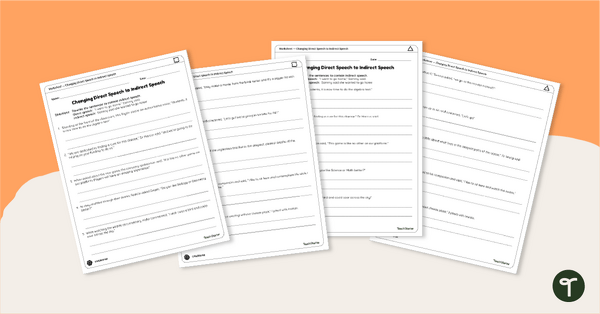
Changing Direct Speech to Indirect Speech – Differentiated Worksheets
Convert direct speech to indirect speech with differentiated quotation mark worksheets.
- Plus Plan
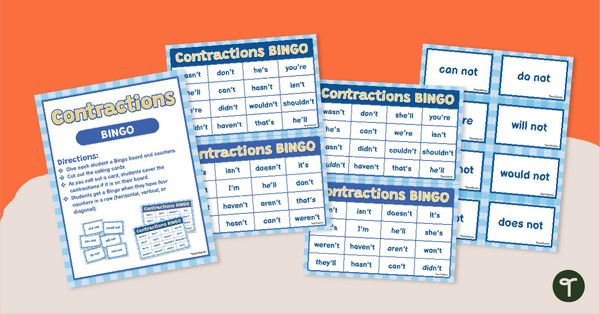
Contractions Bingo Game
Build vocabulary and have fun with contraction word games!
- Plus Plan
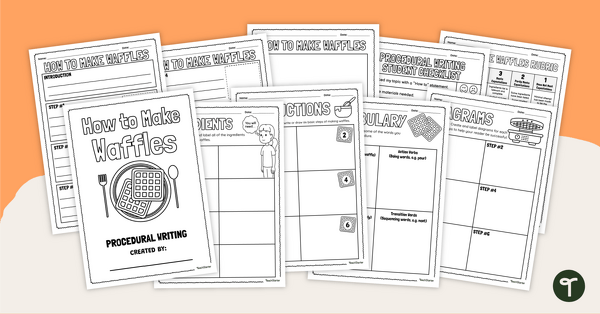
How to Make Waffles – Procedural Writing Project
Get your students writing high-quality procedure texts with this fun “How to Make Waffles” procedural writing project.
- Plus Plan
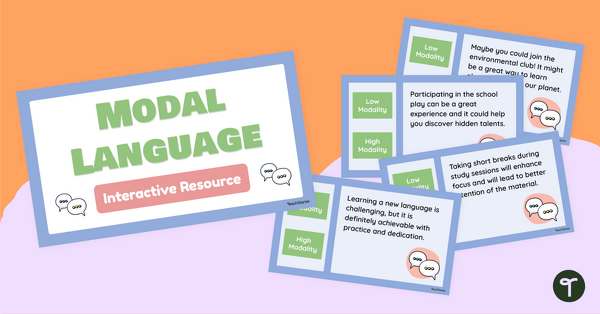
Modal Language Interactive Activity
Explore the language of modality with your students using this digital game perfect for your persuasive writing lessons.
- Plus Plan

Rhetorical Questions Sorting Activity
Explore rhetorical question examples with your students using this set of 28 sorting cards perfect for literacy groups
- Plus Plan
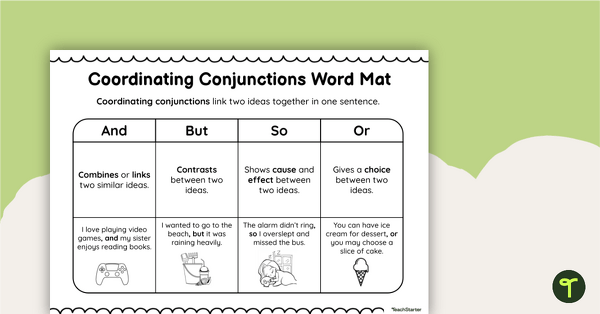
Coordinating Conjunction Word Mat
Boost your students’ writing skills by giving them access to this coordinating conjunctions word mat during literacy lessons.
- Plus Plan
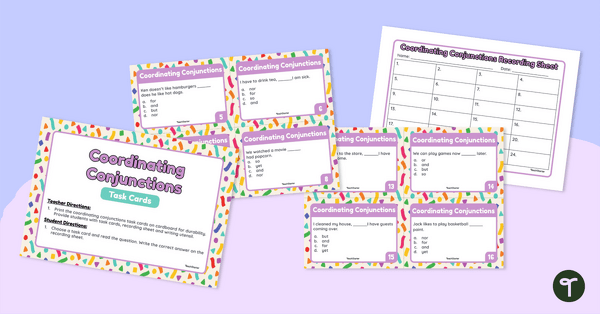
Coordinating Conjunctions Task Cards
Use this set of 24 task cards to reinforce students' understanding of coordinating conjunctions and building compound sentences.
- Plus Plan
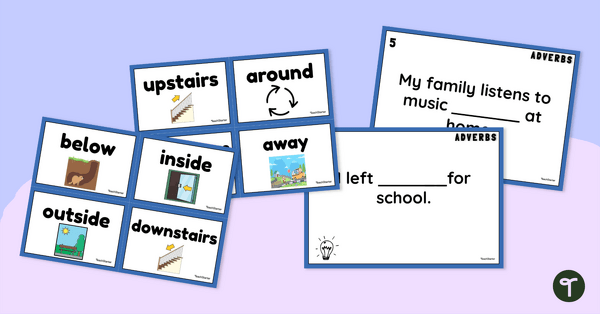
Adverb Whole Class Game
Teach your students how to use adverbs to add detail in simple sentences with this fun whole-class game!
- Plus Plan

Relative Adverbs Worksheet Pack
Use this pack of five worksheets to help your students practise the correct use of relative adverbs in text.
- Plus Plan
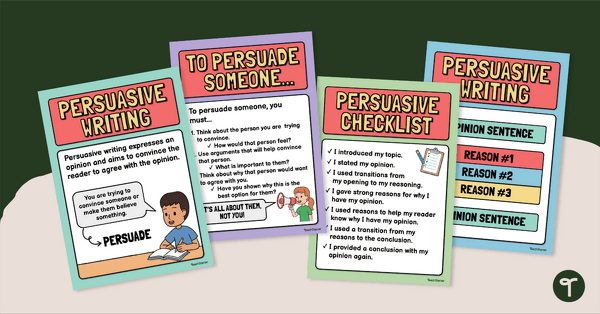
Persuasive Writing Poster Set
Display this set of persuasive posters for students to use as a guide during your persuasive writing units.
- Free Plan
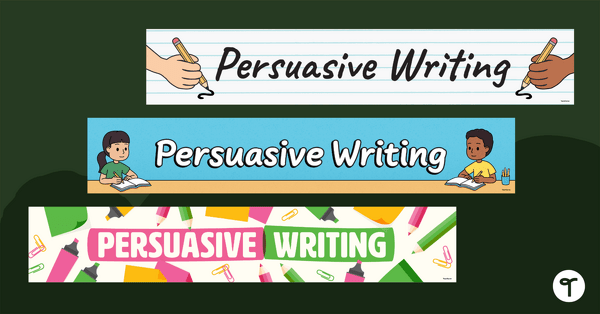
Free Persuasive Writing Display Banners
Create a fun persuasive writing classroom display with these fun looking display banners.
- Free Plan
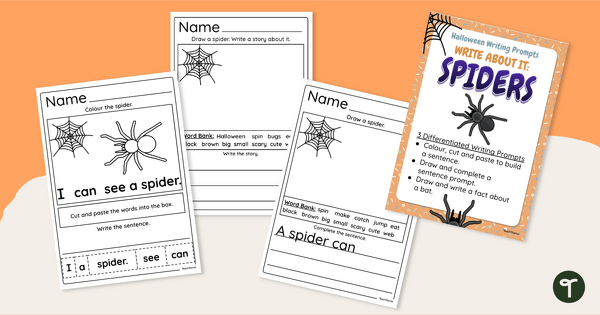
Spider Writing Worksheets - Year 1
Differentiate writing instruction in year 1 with a group of leveled informational writing prompts about spiders
- Free Plan
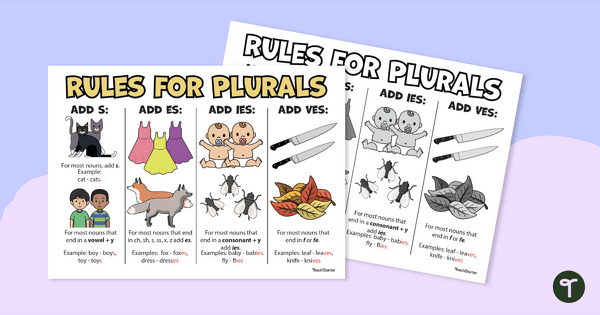
Plural Nouns Chart — Printable Plural Rules Guide
Help students remember the different plural rules with a handy printable guide created for teachers to hand out.
- Plus Plan
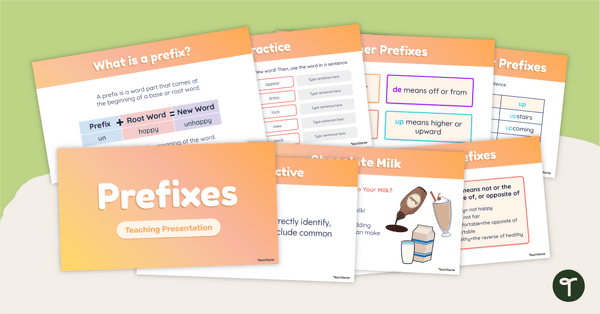
Instructional PowerPoint - Prefixes
Teach your students to correctly identify, define, and spell words with common prefixes with an interactive teaching presentation.
- Plus Plan
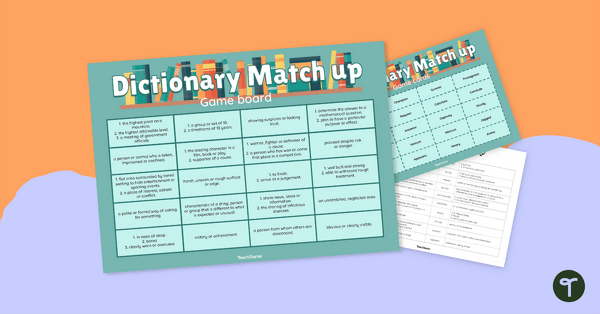
Dictionary Definitions Match Up Game
A set of 20 word cards for students to match to their definition.
- Plus Plan
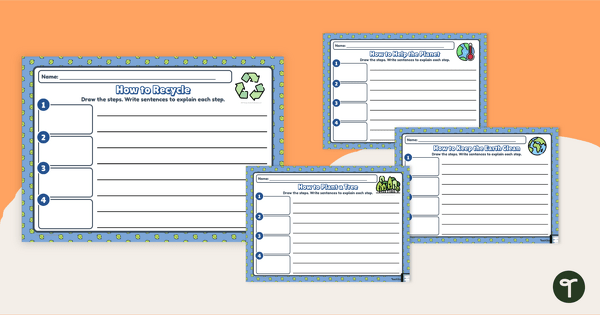
Recycling Writing Prompts
Show off your procedural writing skills with a pack of recycling writing prompts.
- Plus Plan
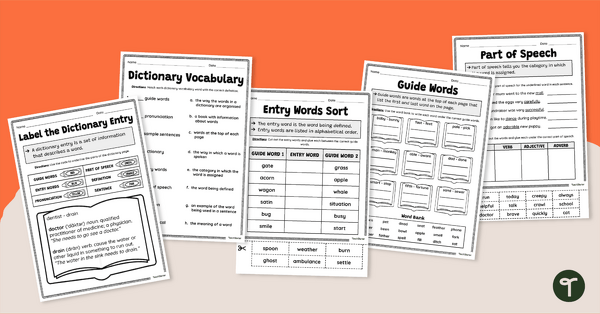
Dictionary Skills Worksheet Pack
Consolidate your students’ knowledge of dictionary skills with this complete worksheet pack!
- Plus Plan
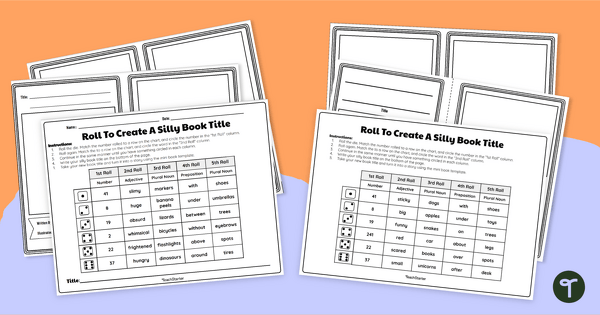
Roll to Create a Silly Book Title – Differentiated Writing Activity
Print a differentiated literacy activity using dice and a chart to create a silly book title and storybook.
- Plus Plan
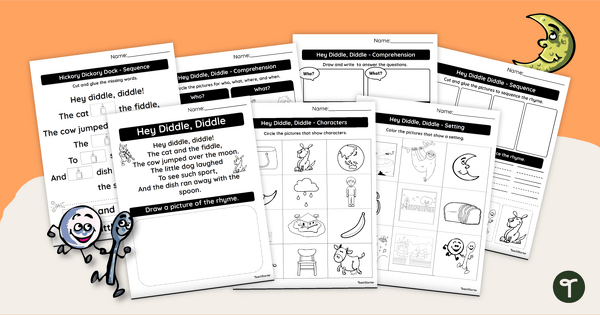
Narrative Features Worksheets - Hey Diddle Diddle
Identify characters, settings and parts of a story with early years reading worksheets featuring the Hey Diddle Diddle nursery rhyme.
- Plus Plan
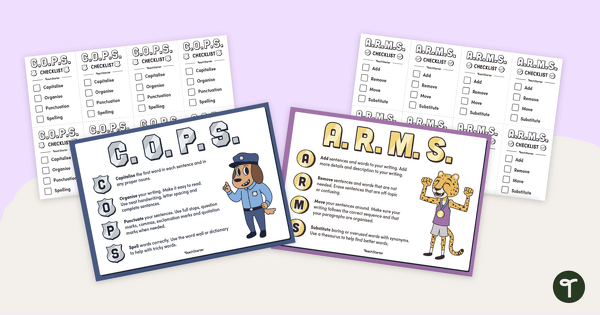
ARMS and COPS - Editing Posters and Checklists (Landscape)
Encourage your students to proofread and edit their writing using the C.O.P.S. and A.R.M.S acronyms with a pair of printable writing posters.
- Plus Plan
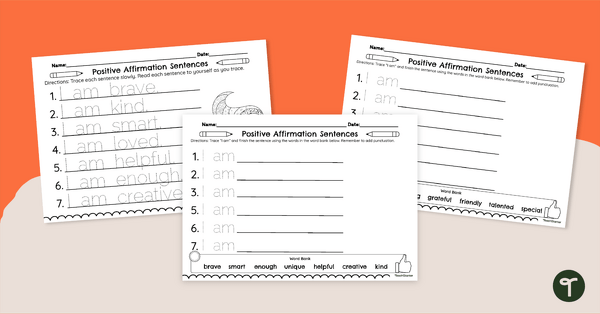
Positive Affirmations for Kids - Writing Worksheets
Complete and read allowed these positive affirmations for kids.
- Plus Plan
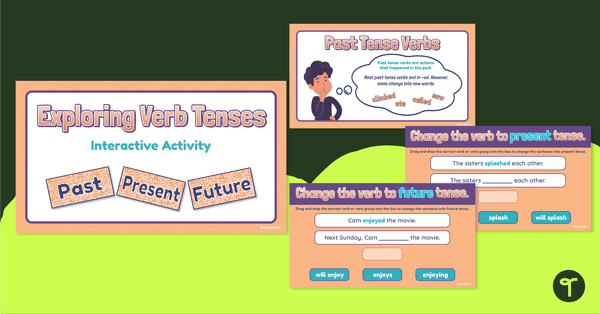
Exploring Verb Tenses - Interactive Activity
Provide your students with a digital learning activity to practise using past, present, and future tense verbs.
- Plus Plan
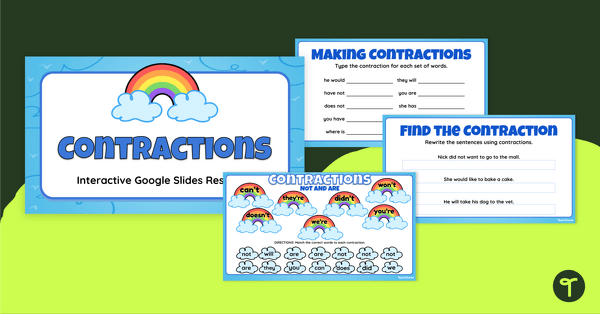
Contractions Interactive Activity
Encourage growth in spelling and writing conventions with a Contractions for Kids Google Interactive.
- Plus Plan
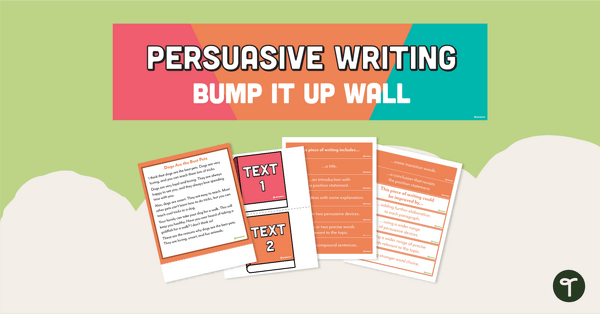
Persuasive Writing Bump It Up Wall – Year 4
A visual display for your classroom to help students 'bump up' their persuasive writing.
- Plus Plan
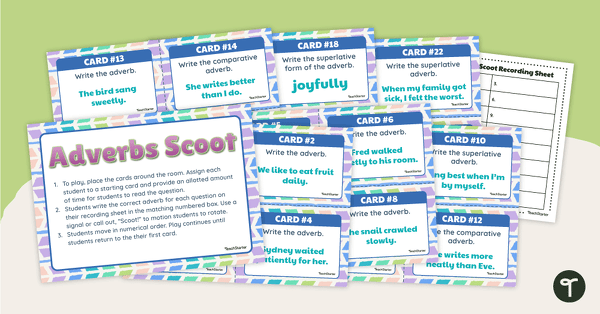
Adverbs Scoot
Build vocabulary and grammar skills with a game of Adverbs SCOOT!
- Free Plan
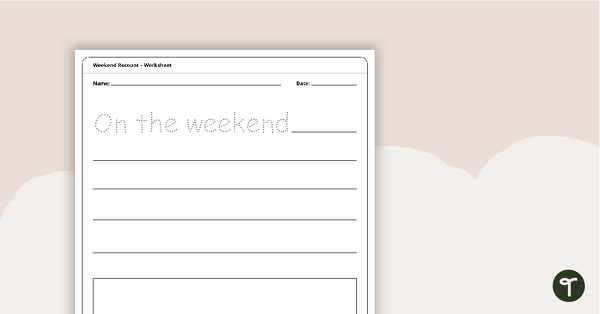
Weekend Recount Worksheet
A worksheet for younger students to use when writing a weekend recount.
- Plus Plan
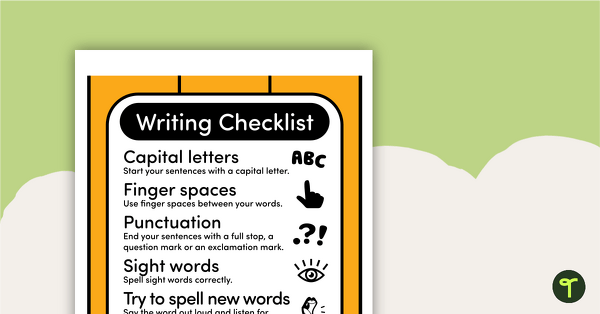
Writing Conventions Poster
Get your students using this writing conventions poster to edit their work across multiple genres.
- Plus Plan
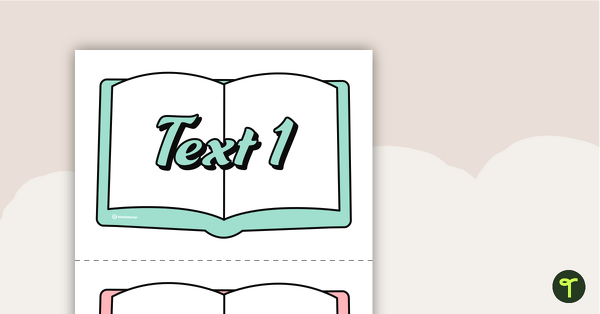
Narrative Writing Bump It Up Wall – Year 4
A visual display for your classroom to help students ‘bump up’ their narrative writing.
- Plus Plan

Narrative Writing Bump It Up Wall – Year 3
A visual display for your classroom to help students ‘bump up’ their narrative writing.
- Plus Plan
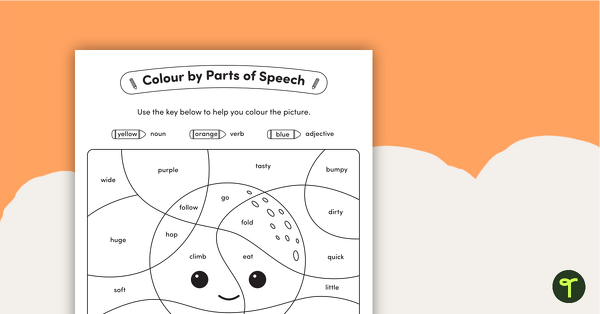
Colour by Parts of Speech - Nouns, Verbs & Adjectives - Octopus
Practise using parts of speech by colouring nouns, verbs and adjectives on the octopus.
- Plus Plan
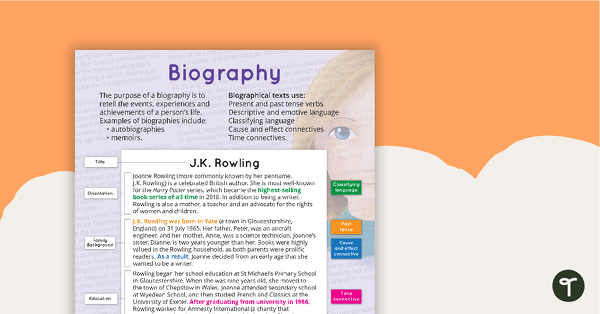
Biography Text Type Poster With Annotations
A poster about the biography text type, including an annotated example.
- Plus Plan
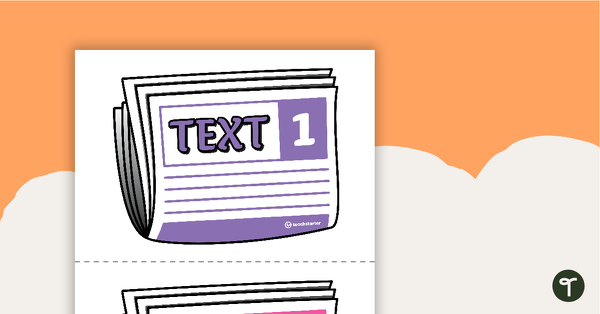
Informative Writing Bump It Up Wall – Year 4
A visual display for your classroom to help students ‘bump up’ their informative writing.
- Writing Worksheets
- Writing Templates
- Writing Games
- Writing Posters
- Writing Teaching Presentations
- Writing Labels, Signs & Decorations
- Writing Word Walls
- Writing Projects
- Writing for Preschool/Kindergarten
- Writing for Foundation Year
- Writing for Year 1
- Writing for Year 2
- Writing for Year 3
- Writing for Year 4
- Writing for Year 5
- Writing for Year 6
- Writing for Year 7